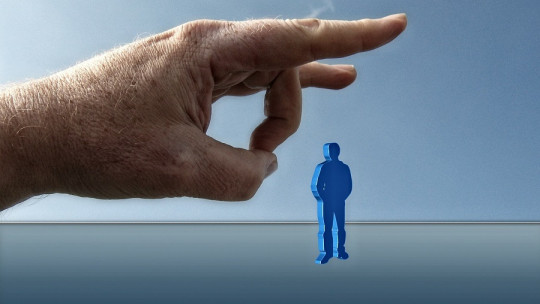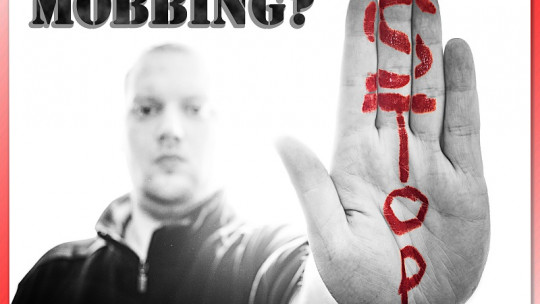According to the World Health Organization (WHO), depression and anxiety are rising global health problems, affecting more and more people around the globe. Without going any further, 300 million people in the world suffer from depressive symptoms, while 260 million have anxiety disorders that go beyond nervousness. It is estimated that anxiety disorders are the most common psychological conditions in the European Union, presenting a prevalence of 14% of inhabitants per year.
The figures are clear: anxiety and stress are a serious problem in today’s society. As Human beings spend up to 9 hours a day in the work environment , it is impossible not to link both fronts in common clinical pictures. Based on this premise, the General Council of Psychology of Spain tells us that 6 out of every 10 Spanish workers feel stressed due to their workload, almost 30% suffer from anxiety due to their relationship with their bosses or colleagues and 1 out of every 4 is afraid of not meeting expectations.
In terms of occupational risks, almost all workers take courses that teach what possible fractures, injuries or systemic damage that can occur when lifting a large load or maintaining a posture for too long and how to avoid them. In any case, emotional health in the work environment has been largely forgotten, until now. Find out with us the new measures that the government is going to take regarding occupational risks because in this case, stress and anxiety are the protagonists.
Technical criterion 104/2021, on actions of the labor and social security inspection in psychosocial risks
The catalyst for this criterion was the European Commission Communication of January 10, 2017 on “Safer and healthier work for all – Modernization of EU legislation and policies on health and safety at work”.
This communication placed special emphasis on Psychosocial risks in the work environment, especially stress, represent one of the most complex occupational health problems (and they are increasing). We do not forget that up to 60% of people report suffering from stress in this area, a burden much higher than that of most physical injuries.
This statement puts an idea as clear as it is necessary in the mind: employers have a legal obligation to protect employees from all harmful sources in the work environment, and this also includes psychosocial protection. Therefore, when evaluating possible occupational risks in an environment, the emotional well-being of the worker must also be taken into account: not only that they do not break a leg while performing physical work, but also the psychological damage that can be caused by doing exactly the same activity. for 20 years.
To exemplify a little what is currently being proposed, We summarize some of the key tables of the document, which confronts the possible psychosocial factors in the work environment and the risks derived from its poor management :
We could continue listing more fronts, linked to personal relationships, the role of the organization, the development of individual potential and many other things. In any case, one idea is clear to us: the occupational risk assessment will now take into account possible emotional stressors such as the lack of cohesion in activities, unpredictable schedules, useless tasks, lack of autonomy and many other things.
Beyond well-being as a worker
In addition to everything mentioned, this technical criterion highlights another reality that we cannot forget: Diversity is essential in the workplace The data, unfortunately, support this statement: according to studies carried out in several EU countries, 55% of women have been victims of sexual harassment on at least one occasion from the age of 15. Of all reported cases, 32% occur in the work environment.
It may not surprise you, but 60% of workplace harassment cases are carried out by the boss or superior, almost always acting individually. Therefore, this criterion shows that it is also necessary to evaluate occupational risks from a plural perspective, in order to protect women, young workers, migrants, older people at risk of exclusion or people with disabilities among other things.
In other words, the reflection of all social strata and cultures is necessary in the work environment, because only in this way will exclusions, humiliations and abuses be avoided. It is not worth it with education, since it also Representation is necessary to achieve the integration of multiculturalism that defines us as a species in all areas
One more step towards mental health
Beyond legislation at the European level, it is worth noting that, in 2018, the World Health Organization (WHO) included Burnout syndrome in its International Classification of Diseases, 11th edition. This syndrome is considered an occupational phenomenon, characterized by tiredness, fatigue, negativity and cynicism associated with the work environment when stress is prolonged over time in the worker’s life
Although this set of sensations and feelings is not considered a pathology today, this is undoubtedly a great step to validate poor treatment in the workplace as a source of emotional distress that goes beyond the moment. Without a doubt, society is moving (little by little) towards labor regularization that takes into account the emotions of employees.
Do you need to adapt your company to the new regulations?
In Psychology 360 We have prepared a program for companies that measures the level of stress and anxiety of workers, and we also offer therapy and psychological assistance services for individuals and organizations in the online mode. If you want to know more about how we work, contact us.









